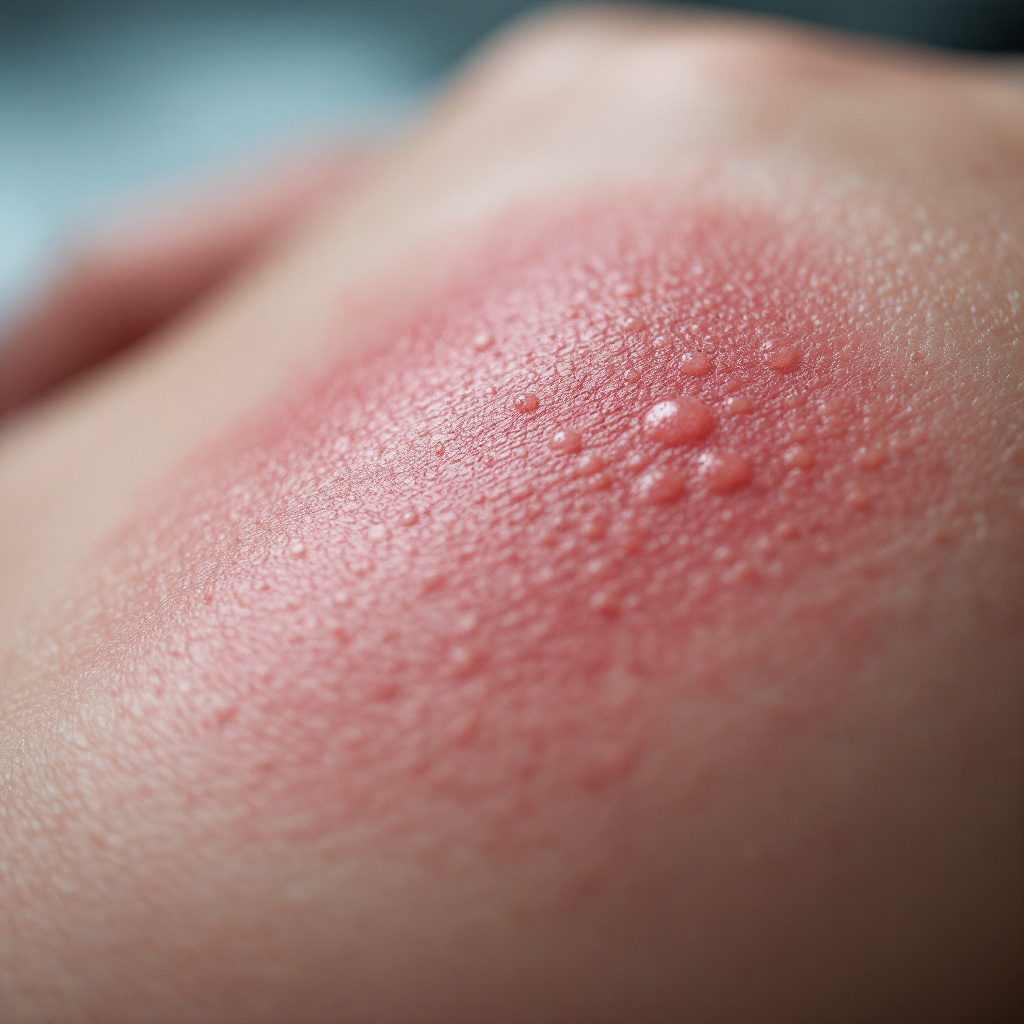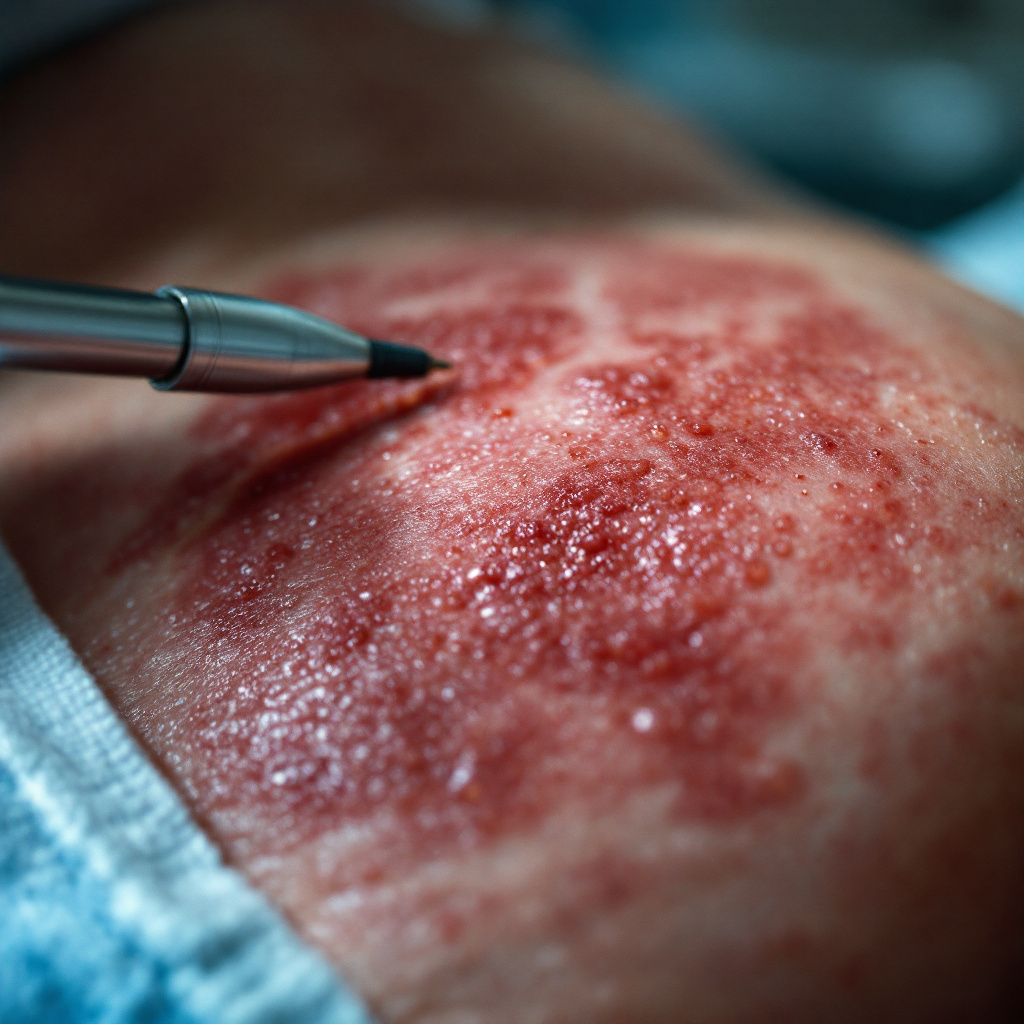When you notice a rash in the groin, between the legs, or on your upper thighs, your mind might race with questions. If you’re over 40 and know you have prostate cancer, or you’re living through its treatments, this kind of change can cause real worry. Maybe the rash itches or burns. Maybe it’s just there, stubborn, refusing to go away.
A “prostate cancer rash” isn’t a phrase you hear every day. You might wonder “why now?” or “is this a sign things are getting worse?” While a rash doesn’t always spell trouble, ignoring it is a mistake. Your skin is your body’s messenger. Understanding these signs, especially when dealing with prostate cancer or its treatments, helps you stay ahead of problems and stay healthy.
What Is a Prostate Cancer Rash?
Prostate cancer rash is any new rash, or skin bump or bump that appears on the skin of men with prostate cancer. Rashes are different from man to man. Some are bumps, red, and itchy. Other rashes are flakes or blistered. Prostate cancer rash does not usually come from the cancer.
It can come from treatment for the cancer. This may be hormone therapy, chemotherapy, or a new drug. Sometimes, the prostate cancer can weaken the immune system. This makes yeast or bacteria grow on the skin. The rash may also come from an allergy or from the rubbing of a medical device.
Do not worry about a rash. It is common to have one. It does not mean the cancer spread to the skin. Still, a rash needs to be seen. If it hurts or is spreading, see a doctor sooner.
Never ignore a rash that is near the groin, or on the legs, or in between the legs with prostate cancer.
Common Locations and Signs: Groin, Legs, and Between the Legs
Skin rashes from prostate cancer treatments often show up in warm, damp, or hidden spots. Your groin, inner thighs, and between the legs are top areas at risk. These zones are perfect storm settings: Lots of sweat, tight clothing, friction, and poor airflow. That’s the recipe for a rash.
Here are some tell-tale features you might spot:
- Redness or pink patches
- Itchiness or burning
- Small bumps or blisters
- Raw or scaly areas
- Cracked or weeping skin
Sometimes the rash stays small and just looks a bit red or dry. Other times, it can flare up quickly and turn sore, raw, or even blistered. The pain may show up out of nowhere, making it hard to ignore. Each area like groin, legs, or between the thighs can look and feel different, so let’s take a closer look at what you might notice in each spot.
Groin Rash and Prostate Cancer: What to Look For
You may see a rash bloom where your thighs meet your groin. This is a popular place for sweat to build up and for fabric to rub, especially if you wear tight underwear or sit often. Cancer treatments like chemotherapy and hormone therapy can make your skin extra sensitive here.
Types of rashes you might see include:
- Contact dermatitis from soaps, lotions, or laundry detergent
- Fungal infections like jock itch (red, ring-shaped, itchy patches)
- Allergic reactions to cancer meds or support products
- Radiation burns (if you’re getting targeted therapy)
Watch carefully if a rash changes quickly or covers more skin than before. Don’t ignore crusting, yellow or green drainage, open spots that won’t heal, swelling that gets worse, or pain that keeps you up at night. Fevers, even mild ones, matter if you also have a rash. These symptoms can point to an infection or a strong allergic reaction. It’s not overreacting to call your doctor right away—delaying can make treatment harder and your recovery slower. If you’re ever unsure whether the rash is urgent, trust your gut and get it checked.
Rash on the Legs: Why It Happens and What It Means
Your legs don’t see as much friction as the groin, but they’re still at risk for prostate cancer rash, especially during treatment. Chemotherapy and immunotherapies can lower your immune system. That opens the door to infections and makes your skin dry and touchy.
What could you see?
- Red or purple spots (sometimes called petechiae)
- Dry, flaky patches
- Raised bumps
- Bruising along with rash
Some meds cause tiny blood vessels to leak or make your skin more likely to react to the sun, known as photosensitivity. If your legs develop a rash that peels, blisters, or becomes painful, call your care team for advice. Mild, flat rashes are common, but anything more severe deserves a check.
Table: Rash Features and What They Might Mean
Here’s a simple guide to common rash features, what they might mean, and when to get medical help:
- Itchy red patches often come from fungal infections, allergies, or irritation. Keep an eye on these patches—if they start spreading or get worse, it’s time to see your doctor.
- Purple dots can signal low platelet counts caused by some medications. This type of rash should always be checked by a healthcare provider.
- Blisters or open skin usually point to an infection or a strong allergic reaction. These require urgent medical attention.
- Mild dry rashes are usually from dry skin or friction. These can often improve with home care, like moisturizing and reducing irritation, but keep monitoring them.
Knowing these signs helps you spot problems early. When in doubt, calling your doctor can prevent issues from getting worse.
Rash Between the Legs: Causes and Concerns
Sweat loves to gather in the space between your thighs, especially if you do a lot of movement, are overweight, or wear a lot of absorbing underwear. This part of your body is a hot place for skin problems. Rash here could come after you sit a lot, use incontinence products, or have too much wetness.
Top causes include:
- Heat rash (tiny blisters or red bumps)
- Yeast infections (raw, itchy patches with edge scaling)
- Contact reactions from body wipes or creams
If you see swelling, cracks, bad odor, yellow crust, or pain, see your doctor. Infections can enter broken skin easily. Gentle, regular cleaning, letting the area air out, and changing wet clothes quickly go a long way to head things off early.
When to See a Doctor and How to Manage Prostate Cancer Rash
Rashes pop up for lots of reasons, especially for men tackling prostate cancer. Knowing when to call the doctor is key.
Call your doctor if you notice:
- Fever or chills with your rash
- Spreading redness or swelling
- Pus, yellow crust, or weeping skin
- Pain you can’t ignore
- Blisters or skin peeling off
- Rash covers a large area quickly
Many mild rashes feel better with simple care at home.
Helpful home-care tips:
- Wash with mild, non-irritating soap and lukewarm water
- Dry skin fully after showers; pat, don’t rub
- Wear loose, cotton underwear and pants
- Avoid creams with perfume or dyes
- Change out of sweaty or wet clothes fast
If you’re using creams or treatments for cancer, always check with your team before adding new products to avoid reactions.
Seeing your cancer care team or a dermatologist regularly helps too. Share any skin changes, new rashes, or worries each visit. You know your body best. If something feels off, speak up.
Conclusion
There are many ways a prostate cancer rash can show up, but most are not something to worry about if you catch it early. Men 40 and over should keep an eye out for any new skin changes, especially during cancer treatment. Your skin can warn you when it needs help. Most rashes clear up if you treat them gently, but if you feel sick, see spreading redness, or find blisters, call your doctor. By staying alert, caring for your skin, and talking honestly with your care team, you will stay safer and feel better while getting prostate cancer treatment.
Now is the time to notice each patch, spot, or bump. Your body’s signs matter. Your health is worth it.

Có thể bạn quan tâm:
Discovering Calm in Each Masterpiece: A Captivating Odyssey into Art by Christine Bell
In the rush of modern life, where life races forward, there’s [...]
Trà Ô Long Tứ Quý Hạnh Dung 200gr Thơm Ngon Cho Đồ Uống
🌈Chào mừng bạn đến với CỬA HÀNG MARIO – Điểm đến [...]
Cách mở tài khoản XM nhanh chóng
1. Click ngay vào website chính thức Vào: www.xm.com Chọn Mở tài khoản [...]
Prostate Cancer Rash: What Every Man Over 40 Should Know
When you notice a rash in the groin, between the legs, [...]
Promo for Embracing Harmony in Every Stroke: An Immersive Journey into Christine Bell’s Art
Film Faster 48 Amidst the chaos of today, where notifications never [...]
So sánh giữa Heli và Hangcha
so sánh giữa Heli và Hangcha — hai thương hiệu xe [...]